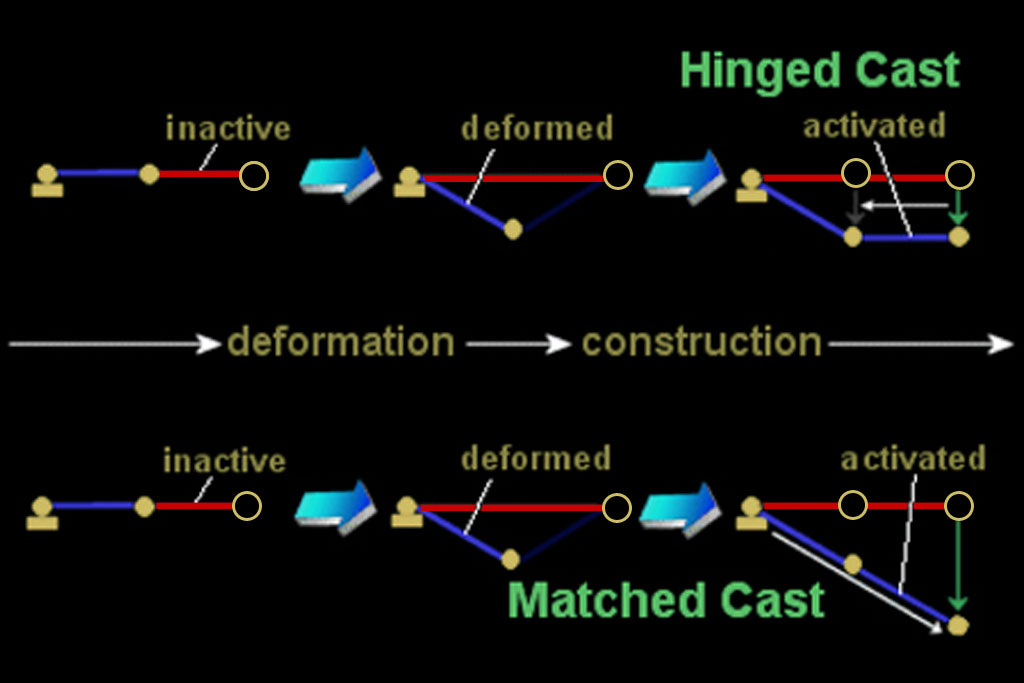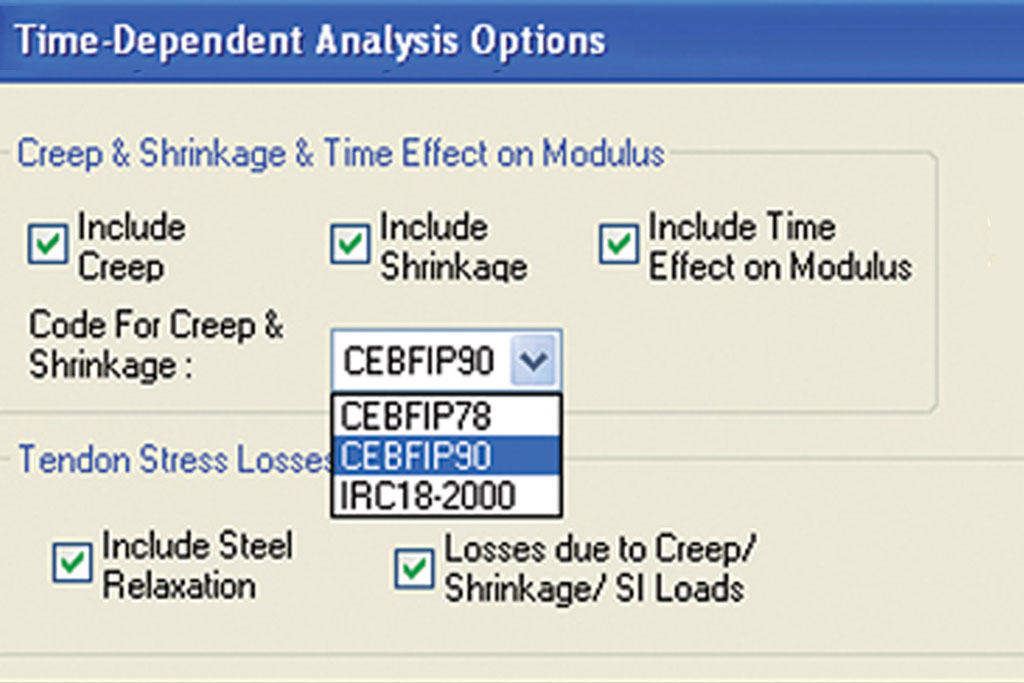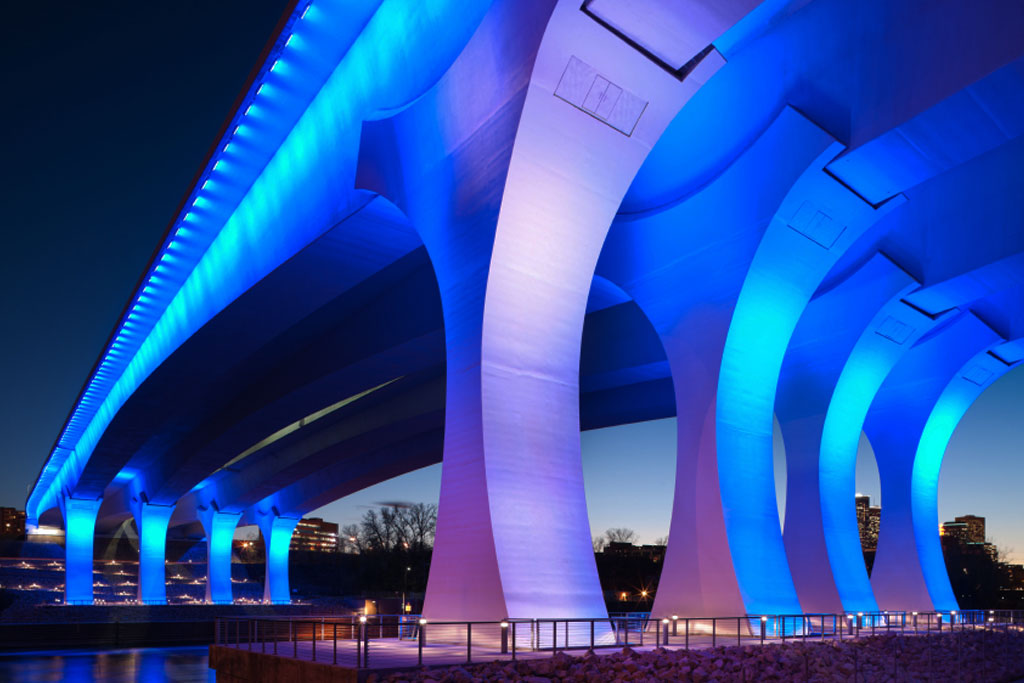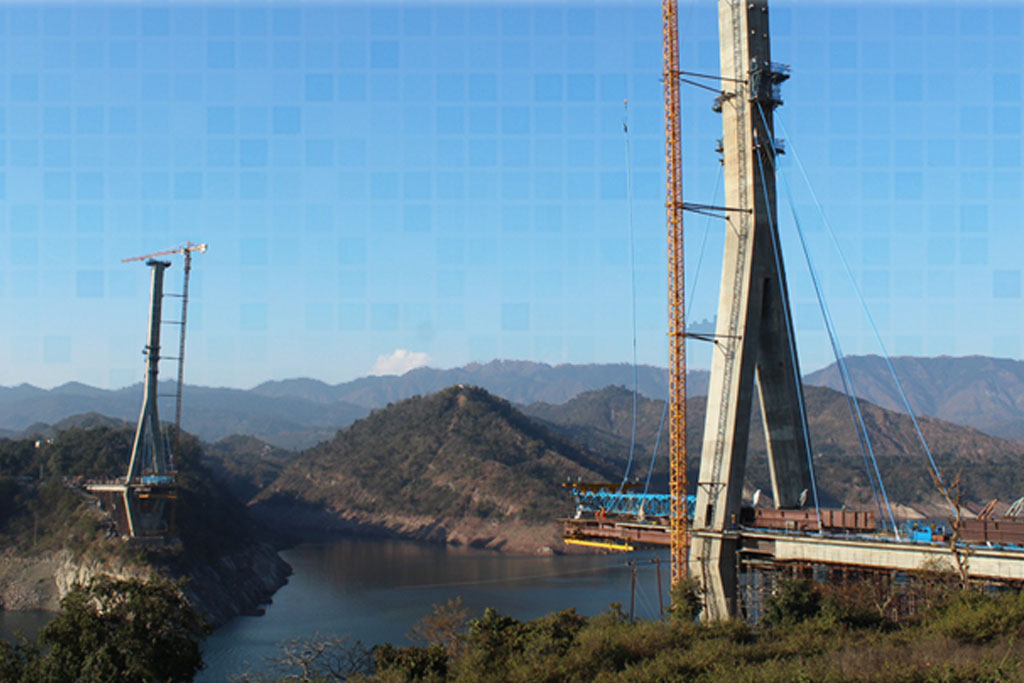Extensively developed to support the design of concrete bridges
LARSA 4D’s advanced time-dependent material effects and unrivaled staged construction capabilities with geometric and material nonlinearity accurately model and address the unique challenges associated with the design and analysis of concrete bridges.
Pre-Cast and Cast-in-Place Concrete Bridges
The analysis capabilities of LARSA 4D include time-dependent material effects including the time effect on elastic modulus, creep, and shrinkage, which are calculated throughout LARSA 4D’s staged construction analysis.
Pre-Stressed and Post-Tensioned Bridges
Tendons can be defined in LARSA 4D using the Tendon Editor, where parabolic curvature can be entered on two planes (y, z). Short- and long-term losses due to relaxation and superimposed loads are computed during staged construction analysis.
Segmental and Spliced-Girder Construction
LARSA 4D’s staged construction analysis has been designed for the needs of segmental, spliced-girder, and balanced cantilever construction, including incremental launching. Displacement initializations, construction method options, and hoist activities determine how deformation affects the placement of the next constructed segment.

Staged Construction of a Post-Tensioned Concrete Bridge

Construction Activities
Supported construction activities in LARSA 4D include construction and deconstruction of members, plates, springs and foundations, in addition to loading, temporary/traveler loads, support changes, displacement initialization and hoist for incremental launching.

Segmental Construction Methods
Segmental construction options for Staged Construction Analysis are used for modeling balanced cantilever bridges. LARSA 4D's hinged cast, match cast, and displacement initiliziation options automatically adjust bridge geometry as a new segments are cast to match the displacements of the previous segments.

Material Time Effects
LARSA’s time-dependent material effects take into consideration creep and shrinkage for concrete, relaxation of steel, time effect on modulus of elasticity, tendon post-tensioning losses from creep, shrinkage and superimposed loads, and custom time dependent curves for particular material properties and design codes.
The following packages of LARSA 4D are recommended for the design and analysis of concrete bridges.





